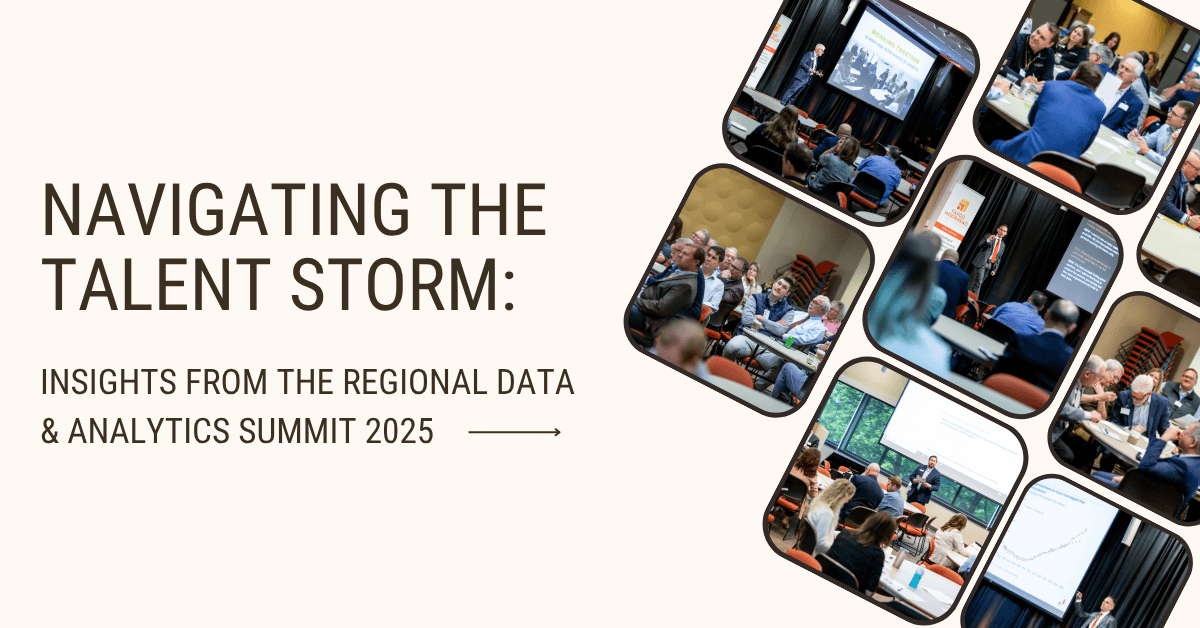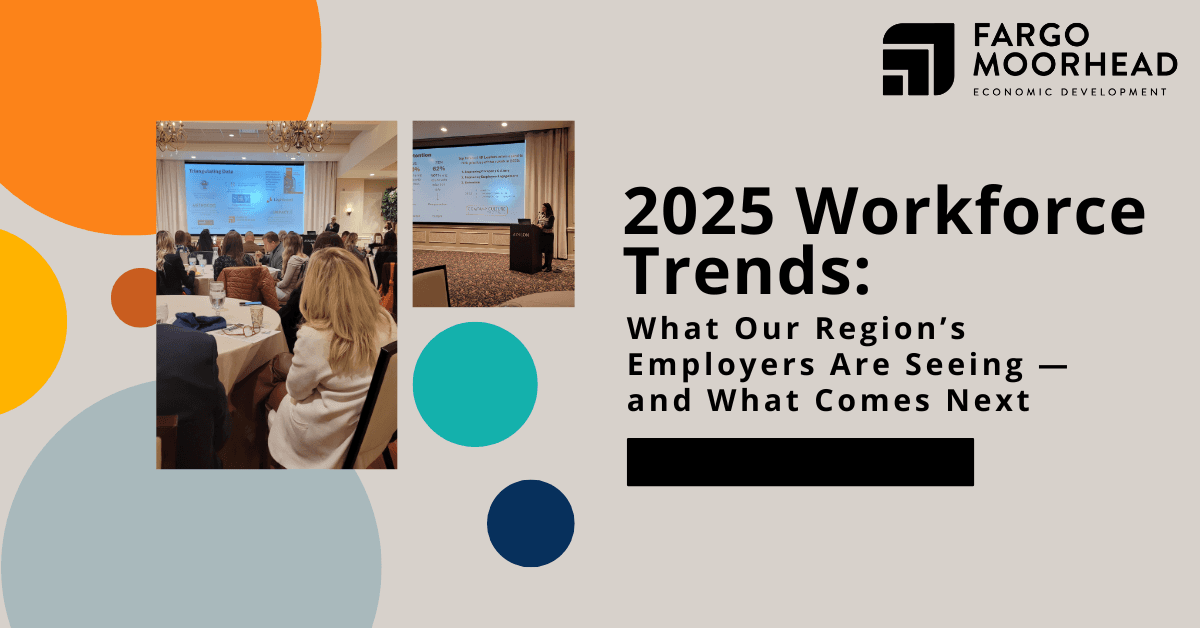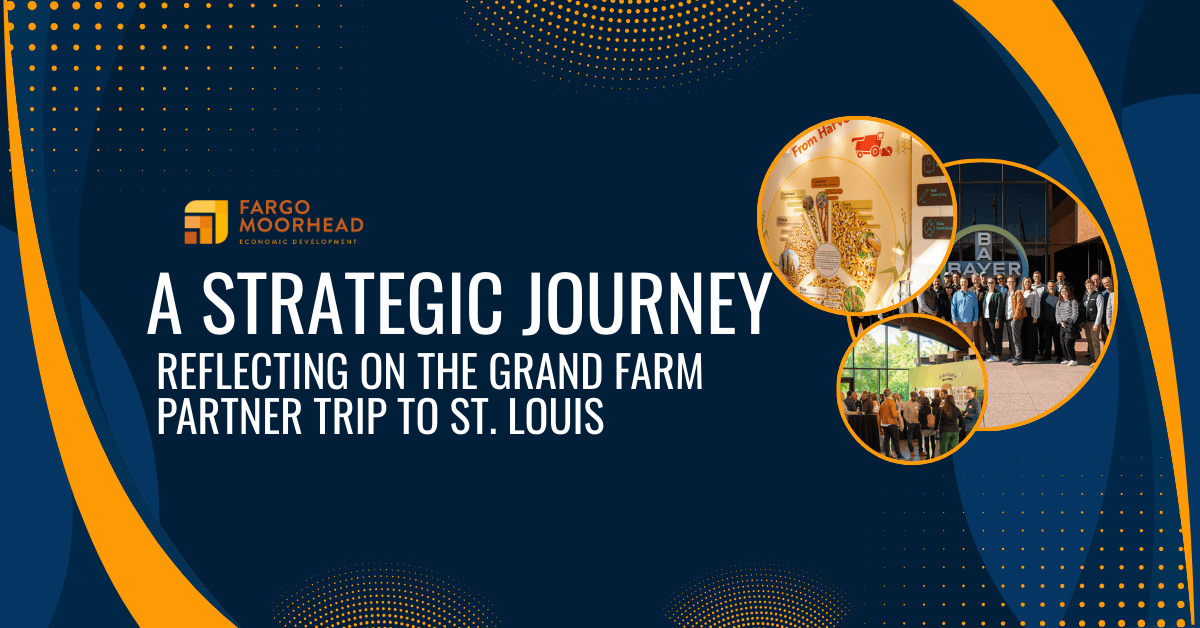Navigating the Talent Storm: Insights from the Regional Data & Analytics Workforce Summit 2025
In an era where the demand for skilled labor is reaching unprecedented heights, the Greater Fargo Moorhead Economic Development Corporation (GFMEDC) is taking proactive steps to address the looming workforce challenges. The Regional Data & Analytics Summit 2025, hosted by GFMEDC and powered by industry insights from Lightcast (a leading labor market data firm), provided a platform for leaders across government, education, and the private sector to converge and strategize on the future of talent development. The summit underscored the urgency of addressing workforce shortages and aligning education with industry needs to ensure sustainable economic growth.
The Workforce Challenge: A National and Regional Perspective
The summit highlighted critical findings from Lightcast, projecting a national shortfall of 6 million workers by 2032. This daunting figure is compounded by the fact that while the Bureau of Labor Statistics anticipates 6.4 million new workers by 2033, only 2.6 million are expected to be of prime working age. The Fargo region is no exception, facing significant shortages in key sectors such as healthcare, bioscience, and manufacturing.
One of the stark revelations from the summit was the misalignment between educational outcomes and job market needs. Despite a 69% growth in college graduates since 2019, 68% of job openings require non-degreed skills, creating a mismatch that must be addressed to bridge the talent gap.
Strategic Themes from the Summit
The summit’s discussions coalesced around several strategic themes for tackling workforce challenges. These themes are categorized based on their impact timeline, from immediate to mid-term results.
Near-Term Strategies (Now and Within Two Years)
- Early, Experiential Exposure: To ensure students and job-seekers are prepared for the workforce, experiential learning opportunities such as internships, apprenticeships, and project-based learning are crucial. These real-world touchpoints bridge the gap between education and careers.
- Talent Retention: Retaining talent is essential for workforce stability. This involves cultivating a supportive internal culture, providing leadership development, and ensuring visible career pathways for employees.
- Talent Attraction: Attracting talent requires a multifaceted approach, including marketing the FM region to potential newcomers, engaging in targeted recruitment, and supporting immigration initiatives. Providing a “soft landing” for new arrivals is crucial to filling gaps in the labor market.
Mid-Term Strategies (Within 3-5 Years)
- Mindset Shift: From “Jobs” to “Journeys”: Careers should be viewed as evolving pathways rather than endpoints. Emphasizing growth, adaptability, and character over credentials will be vital in navigating rapid technological changes.
- Alignment Over Additional Programs: While many programs exist, their effectiveness is hindered by fragmentation and siloed incentives. Unified coordination and shared goals are necessary for impactful outcomes.
- Remove the Roadblocks: Structural barriers such as childcare, housing, and regulatory issues must be addressed to enable successful workforce strategies.
- Education-Industry Policy Realignment: Current models for funding, credentialing, and procurement need revamping to incentivize alignment and agility. Cross-sector partnerships with aligned metrics are crucial for transformative progress.
Taking Action: The Role of Greater Fargo Moorhead EDC
The GFMEDC is committed to leveraging data for informed decision-making and implementing strategies to mitigate workforce challenges. Initiatives like the Lightning Recruitment Program, Company Culture Program, and collaborations with educational institutions are underway to attract and retain talent in the region. We have deployed large national marketing campaigns supporting workforce attraction by messaging our excellent quality of life and great jobs, supporting employers and improving our regional brand. We drive traffic back to our talent attraction site, LiveInFMArea.com.
Additionally, the GFMEDC is working with The Chamber to gather policy-driven data, ensuring legislators have the information needed to support business needs effectively. By focusing on data and analytics, the GFMEDC aims to tell the evolving story of the FM economy and drive policy decisions that align with industry demands.
Conclusion
The urgency to address the workforce challenges highlighted at the Regional Data & Analytics Summit 2025 is palpable. With strategic initiatives in place, the Greater Fargo Moorhead region is poised to tackle the “Rising Storm” of talent shortages head-on. By fostering collaboration across sectors, aligning education with industry needs, and removing structural barriers, the FM region can emerge resilient and ready to compete in the global talent market. The GFMEDC invites industry partners to join this critical endeavor and contribute to the region’s sustainable growth and success.


